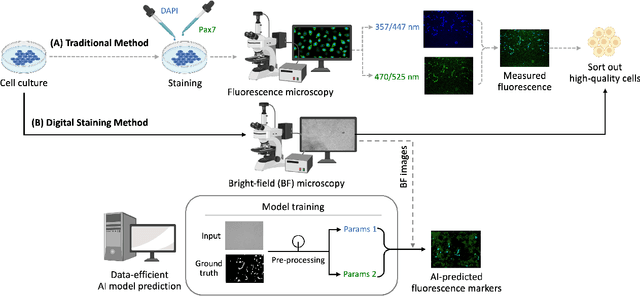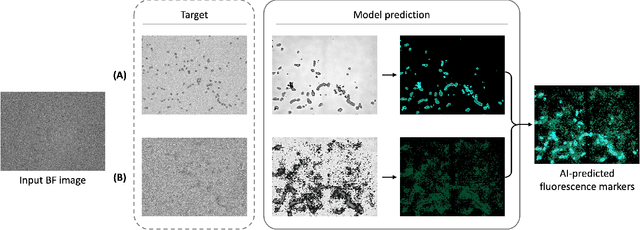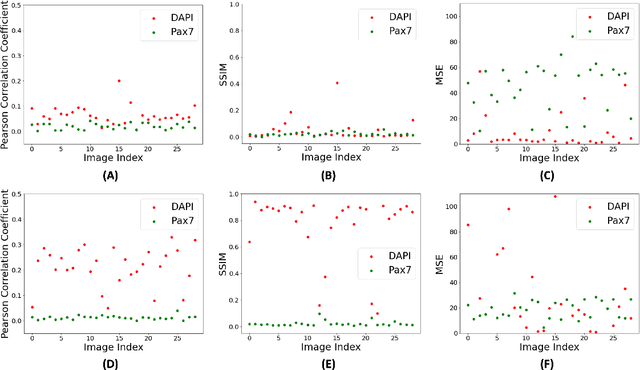Sania Sinha
Label-free prediction of fluorescence markers in bovine satellite cells using deep learning
Oct 17, 2024



Abstract:Assessing the quality of bovine satellite cells (BSCs) is essential for the cultivated meat industry, which aims to address global food sustainability challenges. This study aims to develop a label-free method for predicting fluorescence markers in isolated BSCs using deep learning. We employed a U-Net-based CNN model to predict multiple fluorescence signals from a single bright-field microscopy image of cell culture. Two key biomarkers, DAPI and Pax7, were used to determine the abundance and quality of BSCs. The image pre-processing pipeline included fluorescence denoising to improve prediction performance and consistency. A total of 48 biological replicates were used, with statistical performance metrics such as Pearson correlation coefficient and SSIM employed for model evaluation. The model exhibited better performance with DAPI predictions due to uniform staining. Pax7 predictions were more variable, reflecting biological heterogeneity. Enhanced visualization techniques, including color mapping and image overlay, improved the interpretability of the predictions by providing better contextual and perceptual information. The findings highlight the importance of data pre-processing and demonstrate the potential of deep learning to advance non-invasive, label-free assessment techniques in the cultivated meat industry, paving the way for reliable and actionable AI-driven evaluations.
A Survey on Compositional Learning of AI Models: Theoretical and Experimetnal Practices
Jun 13, 2024Abstract:Compositional learning, mastering the ability to combine basic concepts and construct more intricate ones, is crucial for human cognition, especially in human language comprehension and visual perception. This notion is tightly connected to generalization over unobserved situations. Despite its integral role in intelligence, there is a lack of systematic theoretical and experimental research methodologies, making it difficult to analyze the compositional learning abilities of computational models. In this paper, we survey the literature on compositional learning of AI models and the connections made to cognitive studies. We identify abstract concepts of compositionality in cognitive and linguistic studies and connect these to the computational challenges faced by language and vision models in compositional reasoning. We overview the formal definitions, tasks, evaluation benchmarks, variety of computational models, and theoretical findings. We cover modern studies on large language models to provide a deeper understanding of the cutting-edge compositional capabilities exhibited by state-of-the-art AI models and pinpoint important directions for future research.
 Add to Chrome
Add to Chrome Add to Firefox
Add to Firefox Add to Edge
Add to Edge